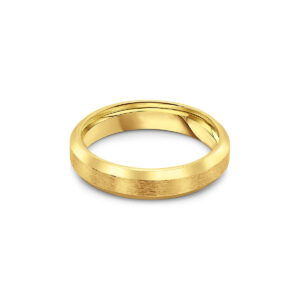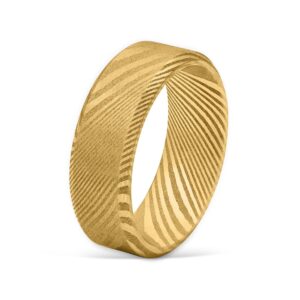When it comes to wedding traditions, one of the most common questions people ask is on which hand does a wedding ring go? The answer to this seemingly simple question varies depending on culture, custom, and personal preference. Wedding rings are not only symbolic of love and commitment but also carry with them historical and cultural significance that can influence which hand the ring is worn on. To understand this better, we need to explore different customs from around the world, the meanings behind these traditions, and how modern influences have shaped the practice.
In many Western countries, particularly in the United States, the wedding ring is traditionally worn on the fourth finger of the left hand, often referred to as the “ring finger.” This practice has its roots in ancient beliefs that a vein runs directly from this finger to the heart, symbolizing the connection of love and emotion. This idea, known as the “vena amoris” or vein of love, was widely believed by the ancient Egyptians and Romans, and it became a long-standing custom that has continued into the modern day. The fourth finger was considered the most fitting place to wear a symbol of lifelong love and partnership.
-
Titanium Steel Brushed Yellow Gold Wedding Band$59.95
-
Matte Pattern Yellow Gold Damascus Steel Wedding Ring$99.95
-
Silver Matte Pattern Damascus Steel Wedding Ring$99.95
-
Crystal Leaf Ring-Leaf Wedding Band$99.95
-
Gold Round Cut Solitaire With Wedding Band$99.95
-
Rose Gold Round Cut With Wedding Ring$59.95
-
Triple Band Wedding Ring With Oval Cut$99.95
-
Gold Three Band Ring Jewelry Splittable$124.95
-
Rose Gold Stackable Minimal Classic Wedding Ring Sets$64.95
In many European countries, the practice of wearing a wedding ring on the left hand also holds strong, but there are exceptions. For instance, in countries like Germany, the Netherlands, and Austria, it is common for both the engagement ring and the wedding band to be worn on the left hand before marriage. After the wedding, however, the wedding ring is moved to the right hand. In these cultures, the right hand is often seen as more authoritative or symbolically important, representing the act of taking vows and entering a partnership.
In contrast, some countries have different traditions altogether. In Russia and other Eastern European nations, the wedding ring is typically worn on the right hand. The reasons for this are not entirely clear, but one possible explanation is that the right hand is seen as the dominant hand in many cultures, and as such, it is the hand that signifies strength, authority, and a commitment to the union. In countries like Greece, Poland, and Hungary, wearing the wedding ring on the right hand is a customary practice, although it is often still a symbol of the same commitments made in the West.
In some countries, the wedding ring is worn on the right hand only by women, while men may wear their wedding bands on the left hand. This is seen in certain parts of Scandinavia, where tradition dictates that women wear their rings on the right hand as a sign of their marital status. Men, however, may continue to wear their wedding ring on the left hand to symbolize their bond with their spouse. This distinction highlights the importance of cultural norms and gender roles in the way wedding rings are worn.
Another interesting variation comes from India and other parts of South Asia, where wedding rings may not always be part of the traditional marriage ceremony. Instead, in many cases, wedding jewelry is more culturally significant. In India, for instance, a woman may wear a mangalsutra, a necklace that symbolizes the marriage bond, rather than a ring. However, in more modern, cosmopolitan areas, couples may adopt Western practices and wear wedding rings, often on the fourth finger of the left hand. It’s important to note that these customs can vary widely depending on religion, region, and personal preference.
The idea of wearing a wedding ring on the left or right hand can also be influenced by personal preferences and modern trends. In recent years, some couples have opted to forgo tradition and make their own decisions about which hand to wear their rings on. For example, some individuals may choose to wear their wedding band on the left hand and their engagement ring on the right, or vice versa. Others may choose to wear both rings on the same hand for practical reasons, such as comfort or aesthetics. There is no definitive rule that says the rings must be worn in a specific way, and many people today are more open to bending traditions to fit their personal style.
In addition to personal preference, there are also considerations related to practical reasons, such as the type of work one does or lifestyle factors. For example, someone who works with their hands or in an environment where rings may be at risk of damage might opt for wearing their wedding ring on the right hand or even on a chain around their neck to avoid accidents. Similarly, people who have multiple rings may decide on which hand to wear each one based on convenience or to avoid overcrowding one finger.
It’s also worth noting that the symbolism of the wedding ring extends beyond just its position on the finger. The choice of material, the design of the ring, and even the style of the engagement ring play significant roles in shaping the meaning of marriage for the couple. Some people might choose simple bands, while others prefer more elaborate designs, all of which contribute to the personal significance of the wedding ring.
In many cases, the tradition of wearing a wedding ring on a specific hand is influenced by religious beliefs. In Christianity, for instance, the engagement ring is often worn on the left hand, with the wedding band traditionally placed on the same finger during the ceremony. In Jewish traditions, however, the wedding ring is placed on the index finger of the right hand during the ceremony and later moved to the fourth finger of the left hand. In Hindu ceremonies, the bride may wear multiple rings or other symbolic jewelry on various parts of the body, further demonstrating how wedding practices can vary widely.










